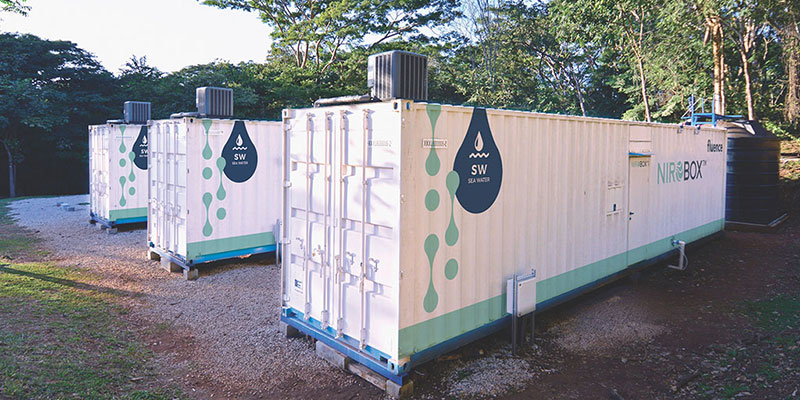
Decentralized water and wastewater treatment, which use small, scaled plants at the point of need, offer a more focused, efficient way of meeting needs.
Water management is waking up to attractive decentralized options
In 2013, the National Onsite Wastewater Recycling Association described decentralized wastewater treatment systems as “the redheaded stepchildren of the wastewater industry,” despite their advantages. In general, water management has not yet fully appreciated decentralization’s ability to sidestep problems associated with large-scale wastewater treatment, water purification, and desalination.
In recent years, though, there has been a growing awareness of options to the dated centralized treatment model.
The main idea of decentralized treatment is that smaller, scaled facilities can do the job better and more economically than a distant legacy plant, particularly because the need for pipelining is lowered.
Despite the advantages of decentralization, old ideas have persisted.
Decentralized Wastewater Treatment
A good example of the benefits of decentralization is an extensive project in Central China. Under the traditional centralized treatment paradigm, there were no good options for handling domestic sewage from service areas along Hubei Province’s highway system.
Untreated discharge was not an option. Trucking the sewage to distant facilities would have required much in the way of ongoing labor and fuel use. And with 80 service areas at 50-mile intervals, the cost of building pipelines would have been astronomical.
Instead, water managers chose modular Aspiral™ plants to treat the service area wastewater. The containerized units were installed and began treating the wastewater to exceed China Class 1A reuse standards. The treated effluent is released safely into the environment. No pollution. No tanker trucks. No bank-breaking pipelines.
In water-stressed China, the effluent is a boon for surrounding ecosystems and agriculture. With centralized treatment, local water reuse is rarely viable nearby due to the cost of return pipelines. With Aspiral™ efficiency, the Hubei plants outperform legacy technologies in terms of both effluent quality and energy costs.
Another aspect of decentralization is the ability to remotely manage and operate a group of plants spread across a wide service area. Even though the Hubei plants are not physically connected, they are controlled centrally, a mode called distributed treatment. Conversely, when local control is desired, a single small-scale plant can be managed autonomously.
In the United States, the Environmental Protection Agency supports decentralized treatment, and it dovetails with a watershed approach to water management.
Decentralized Water Treatment
Decentralized water treatment and desalination also eliminate many of the perennial problems that haunt infrastructure projects.
First, major centralized desalination projects are unable to react to changing need as well as small-scale projects. In response to Australia’s lengthy Millennium drought, the AU$2 billion Kurnell desalination plant in Sydney took a decade to build, and it was commissioned just as the drought ended. It then earned the title of “white elephant,” as residents paid AU$500,000 per day to keep it on standby for years. When drought returned and it was needed again, it took months to restart.
Plans for the massive Poseidon desalination plant in Orange County, California, finally were rejected over concerns about the environmental impact of brine diffusion, as well as political complexities. After a decade of costly negotiations, planning, and consulting, ground was never broken for the project.
Small-scale desalination, conversely, offers water management a granular option to cumbersome regional systems. Plants using Fluence NIROBOX™ units, for instance, can be scaled to meet demand by using units in tandem. If demand decreases, units can be removed.
Because the smaller-scale plants are spread out, there’s less concern over brine diffusion. Smaller service areas can mean less political complexity, and smaller-scale plants only require standard, less costly delivery pipe. NIROBOX™ offers updated reverse osmosis technology that rivals per-unit water costs of large-scale desalination plants.
Decentralization has changed water management by offering attractive options where once there were only lesser or greater evils. The science of decentralization is now settled. The remaining question is how long water managers will hang onto 20th-century ideas. Contact Fluence to discover how a decentralized solution can more aptly meet your area’s needs.
